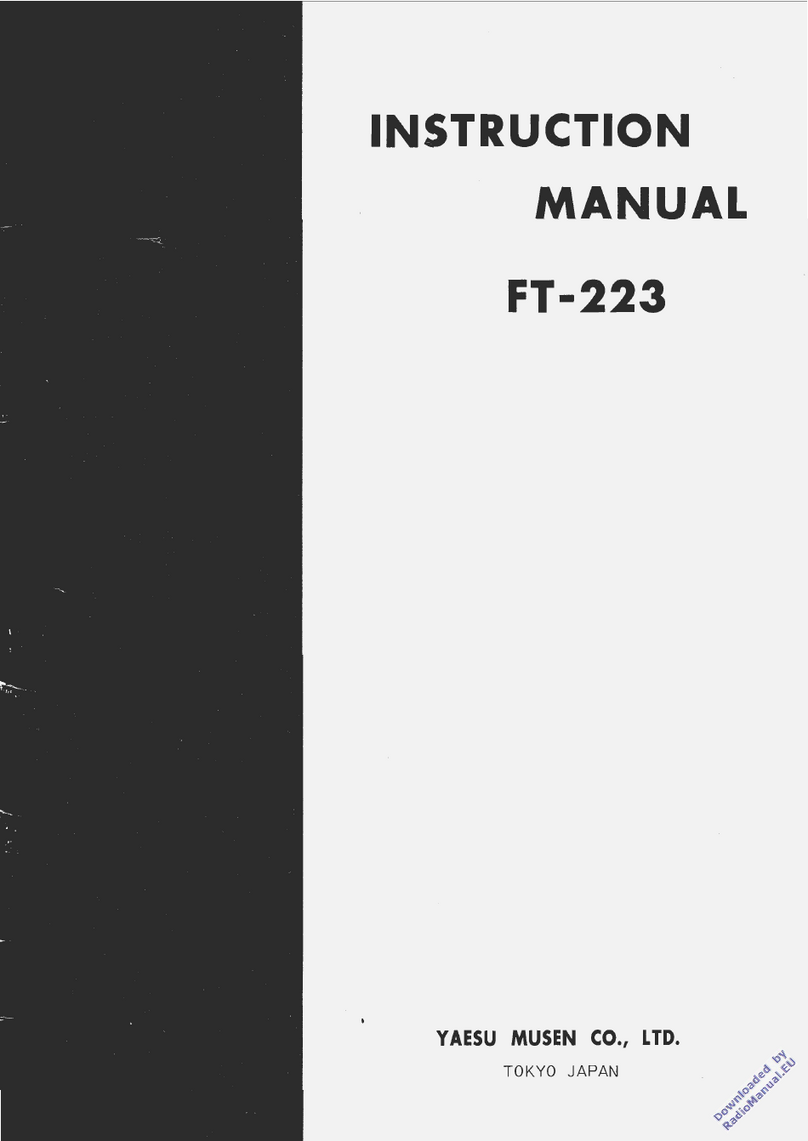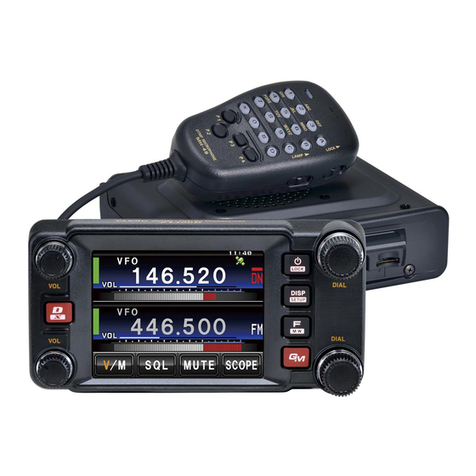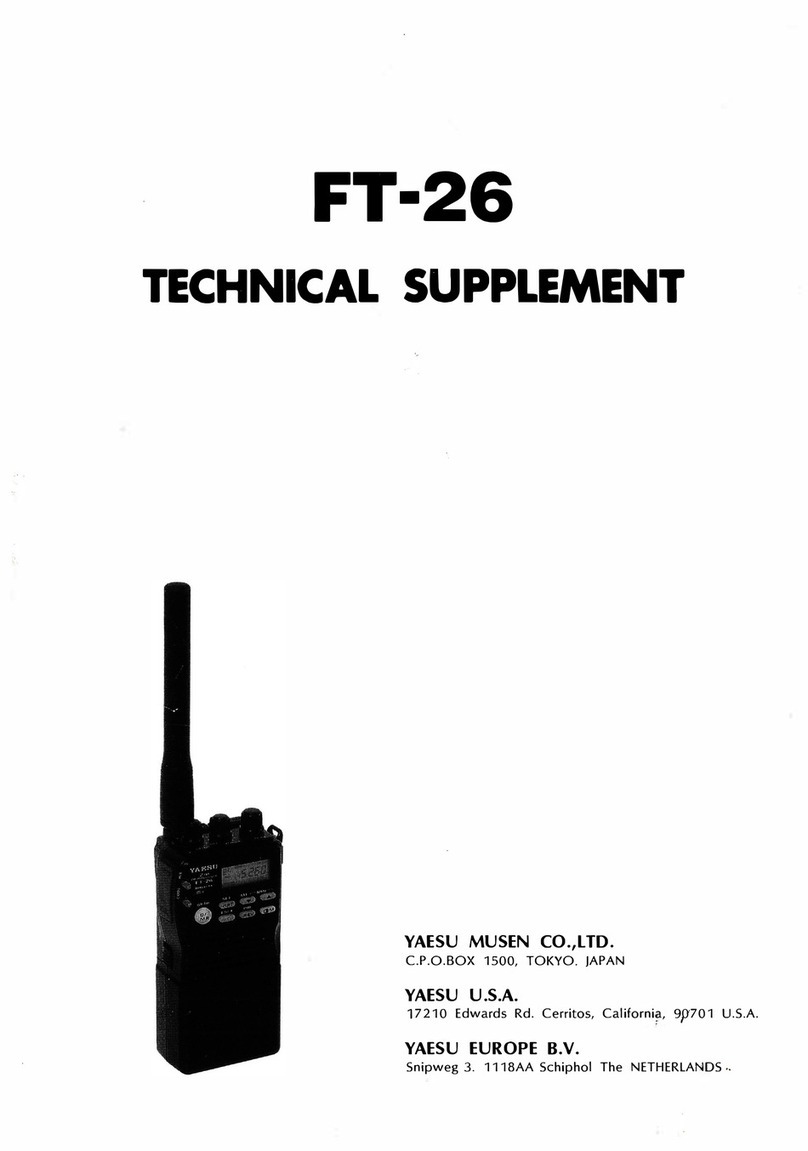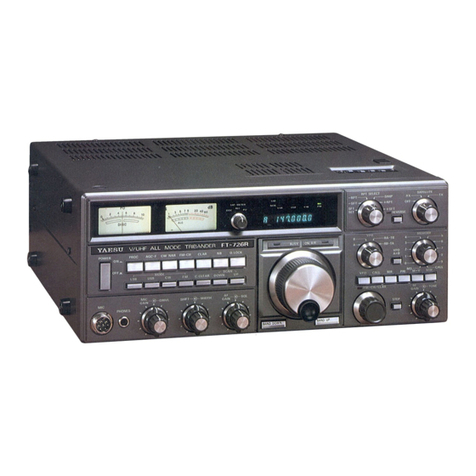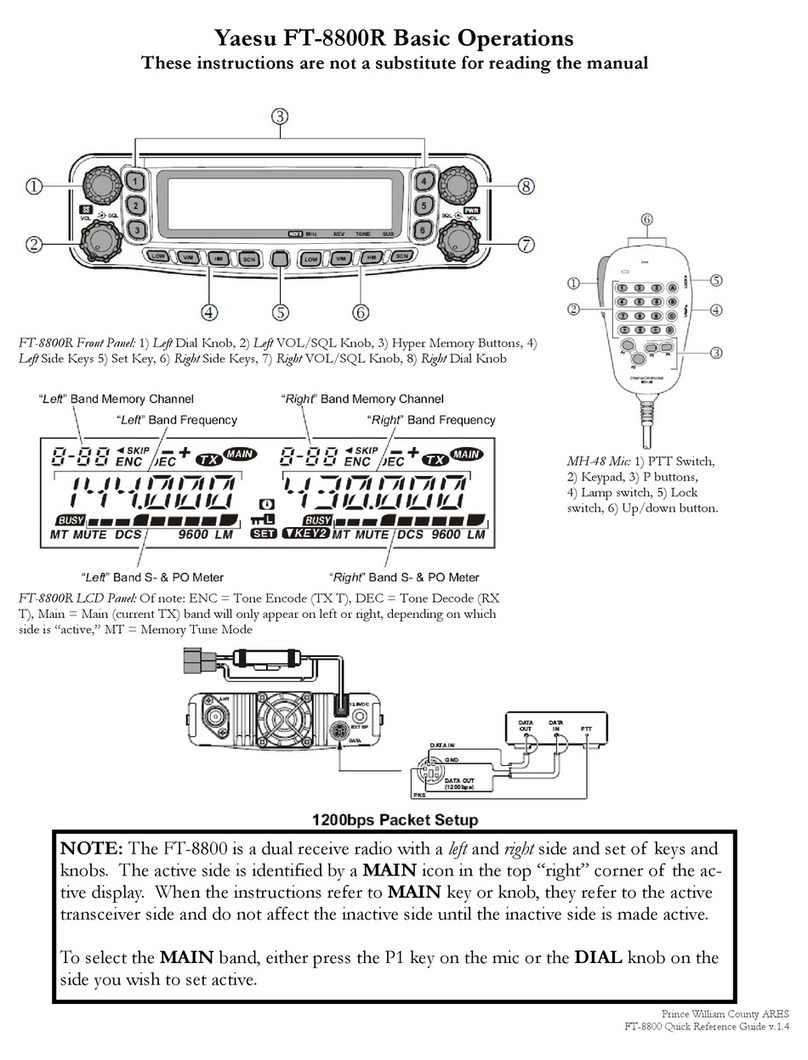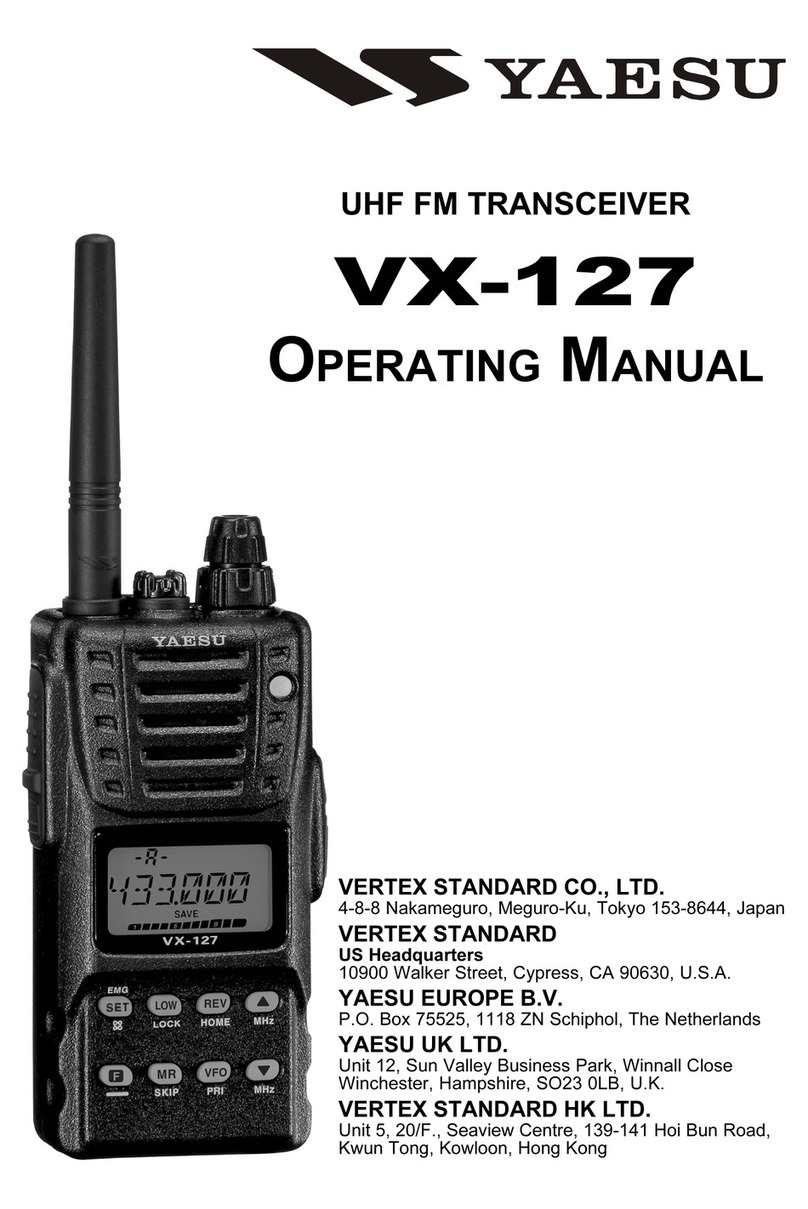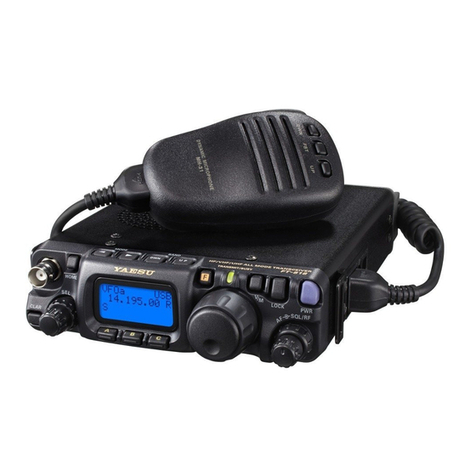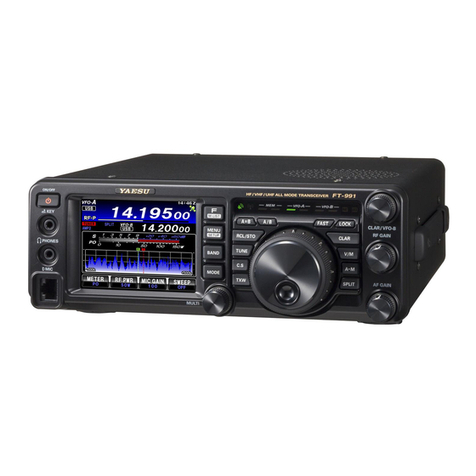Circuit Descripton
Receioe Signal Path
Incoming RF from the antenna jack is deliv-
ered to the Main Unit and passed through a low-
pass filter and a I/+-wave antenna switching
network consisting of coils L1003 & Ll-004, ca-
pacitors C1003 & C1004, and diodes D1001 &
D1025. Signals within the frequency range of the
transceiver are then passed through a varactor-
tuned bandpass filter consisting of T1001/T1002
before RF amplification by Q1001 (3SK131). The
amplified RF is then bandpass filtered again by
varactor-tuned resonators T1,003/T1004, to en-
sure pure in-band input to 1st mixer
Q1002/Q1003 (2SK302GR x 2).
Buffered output from the VCO Unit is ampli-
fied by Q1005 (25C2759) and lowpass filtered by
LL009 and C1.042/C1043, to provide a pure 1st
local signal between LL8.6 and 152.6MH.2 to the
1st mixer. The 21.4-MHz 'l.st mixer product is
passed through dual monolithic crystal filter
XF1001 & XF1002 (t7.5 kHz BW) to strip away all
but the desired signal, which is then amplified by
Q1004 (25C2714Y).
The amplified 1st IF signal is applied to FM IF
subsystem IC Q1008 (MC3372ML), which con-
tains the 2nd mixer, 2nd local oscillator, limiter
amplifier, noise amplifie1, S-meter amplifier and
squelch gates. A 2nd local signal is generated
from 21.855 MHz crystal XL001, which produces
the 455 kHz 2nd IF when mixed with the 1st IF
signal within Q1008. The 2nd IF is passed
through ceramic filter CF1001 to strip away un-
wanted mixer products, and then applied to the
limiter amp in Q1008, which removes amplitude
variations in the 455 kHz IF before detection of
the speechby ceramic discriminator CD1001.
Detected audio is delivered from Q1008 to the
CNTL Unit, where it passes through buffer am-
plifier Q2018 (2sc2712cR) and audio gateQ2002
(DTC114EK) before de-emphasis, and high-pass
filtering by Q2001-2 (NJM29O2Mj/4). Another
audio muting gate, Q2003 (DTC114EK), passes
the signal, which is then combined with beeper
audio originating from the microprocessor
through Beeper volume trimrner VR2001. The
level of the combined receiver and beeper audio
on the CNTL Unit is set by VOL potentiometer
VR3002 on the DISP Unit and is then retumed the
Main Unit for amplification by Q1023
(TDA2003H) up to 2 watts for the optional head-
phone jack or 8-ohm loudspeaker.
Squelch Control
The squelch circuit consists of noise amplifier
Q1007 (2S'C2712GR) and a highpass filter and
squelch trigger within Q1008 on the MAIN Unit,
and control circuitry within microprocessor
Q2006 (SC418082CFU) on the CNTL Unit.
When no carrier is received, noise at the out-
put of the detector stage in Q1008 is amplifiedby
Q1007 and highpass filtered by the noise amp
section of Q1008, and then rectified by D1012 to
provide a DC control voltage for the squelch
switching section within Q1008. With no carrier,
pin 14 of Q1008 is high. This signal is inverted by
Q1006 (lMHs) and delivered to BUSY pin 15 of
main microprocessor Q2006 on the CNTLUnit as
the Scan Stop signal, which causes the BUSY indi-
cation on the display when the squelch is open.
This signal also causes the microprocessor to cut
receiver audio in two places on the CNTL Unit
mentioned already: opening audio mute gate
Q2002, and pulling the audio line to ground just
before the audio amplifier at Q2003, thus silenc-
ing the receiver while no signal is being received,
and during transmission.
When a carrier appears at the discriminator,
noise is removed from the output, causing pin 1,4
of Q1008 to go low. This signals the microproces-
sor to activate the BUSY indicator through LCD
driver Q3001 (LC7582E). The microprocessor
then checks for CTCSS tone detection from the
FTS-17A Tone Squelch Unit (if installed), and for
Digital Code Squelch information (if the FRC-6
Pager Unit is installed). If not transmitting and
tone squelch is not activated, or if the received
tone mitches that programmed, the microproces-
sor switches Q2002 and Q2003 to allow audio to
pass to the amplifier and loudspeaker.
Center-Stop Scanning
To ensure that scanning stops at the center of a
detected signal, discriminator output from pin 9
of Q1008 is also delivered to comparator circuit
Q2001 (NJM2902-3/+ & -a/+) on the CNTL Unit,
which compares the discrirninator output to a
preset DC level. The output of the comparator
connects to the Scan Stop line, preventing the
received signal from signalling the microproces-
sor to stop scanning until the signal has been
FT-2500M Technical Supplement 1-7


